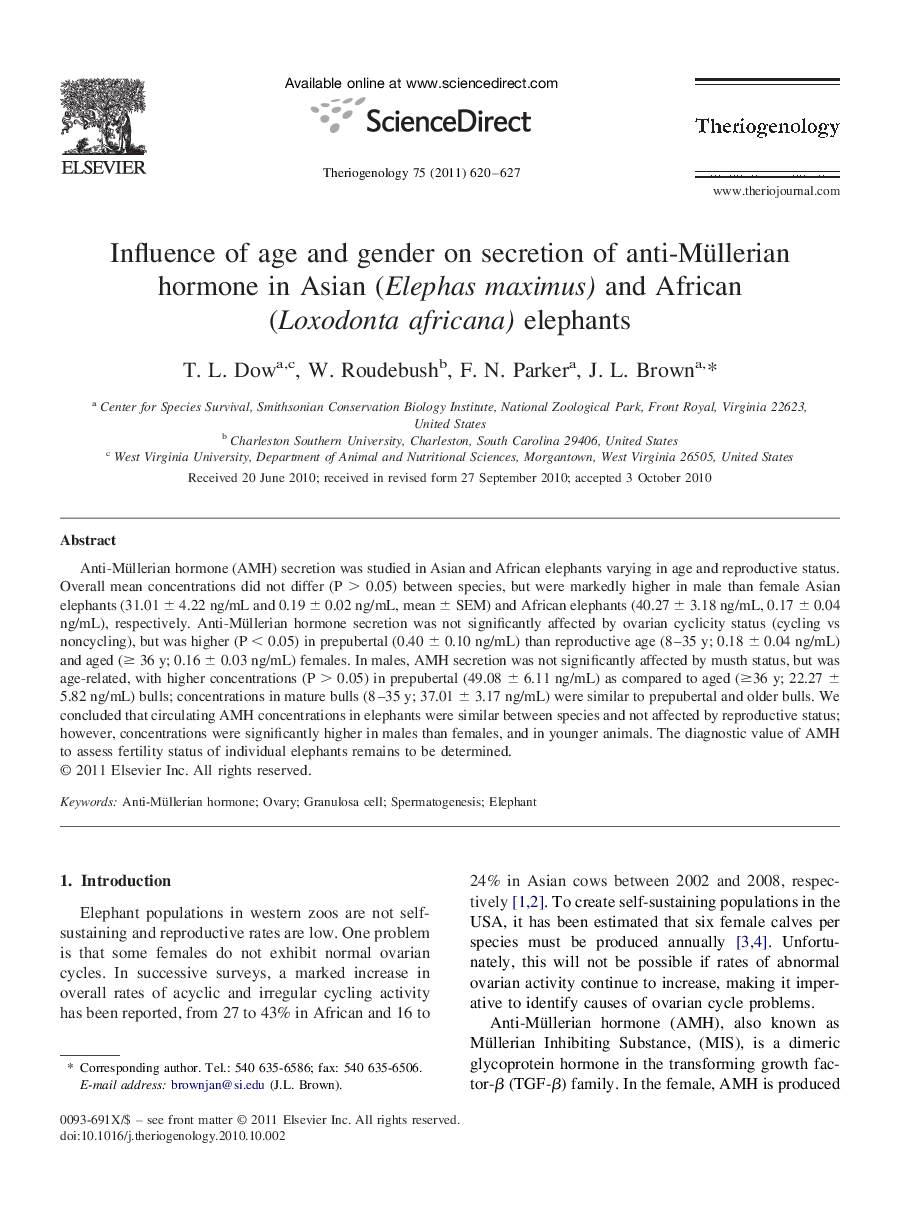| Article ID | Journal | Published Year | Pages | File Type |
|---|---|---|---|---|
| 2095710 | Theriogenology | 2011 | 8 Pages |
Anti-Müllerian hormone (AMH) secretion was studied in Asian and African elephants varying in age and reproductive status. Overall mean concentrations did not differ (P > 0.05) between species, but were markedly higher in male than female Asian elephants (31.01 ± 4.22 ng/mL and 0.19 ± 0.02 ng/mL, mean ± SEM) and African elephants (40.27 ± 3.18 ng/mL, 0.17 ± 0.04 ng/mL), respectively. Anti-Müllerian hormone secretion was not significantly affected by ovarian cyclicity status (cycling vs noncycling), but was higher (P < 0.05) in prepubertal (0.40 ± 0.10 ng/mL) than reproductive age (8–35 y; 0.18 ± 0.04 ng/mL) and aged (≥ 36 y; 0.16 ± 0.03 ng/mL) females. In males, AMH secretion was not significantly affected by musth status, but was age-related, with higher concentrations (P > 0.05) in prepubertal (49.08 ± 6.11 ng/mL) as compared to aged (≥36 y; 22.27 ± 5.82 ng/mL) bulls; concentrations in mature bulls (8–35 y; 37.01 ± 3.17 ng/mL) were similar to prepubertal and older bulls. We concluded that circulating AMH concentrations in elephants were similar between species and not affected by reproductive status; however, concentrations were significantly higher in males than females, and in younger animals. The diagnostic value of AMH to assess fertility status of individual elephants remains to be determined.
